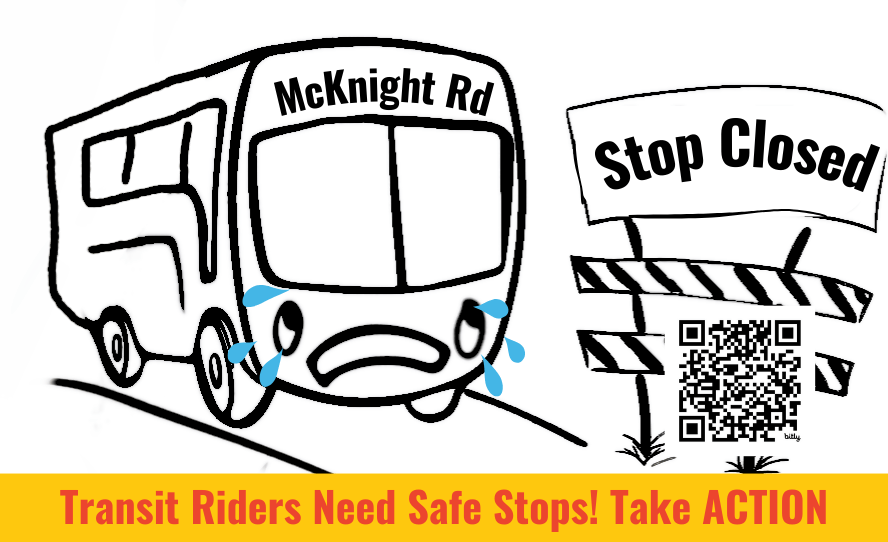 Image description: Black and white cartoon bus that says McKnight Rd and has a sad face next to a cautionary road sign that Route Closed. Banner beneath the image reads, Transit Riders Need Safe Stops! Take ACTION. Sign the petition! Demand PennDOT make McKnight Rd...
Image description: Black and white cartoon bus that says McKnight Rd and has a sad face next to a cautionary road sign that Route Closed. Banner beneath the image reads, Transit Riders Need Safe Stops! Take ACTION. Sign the petition! Demand PennDOT make McKnight Rd...
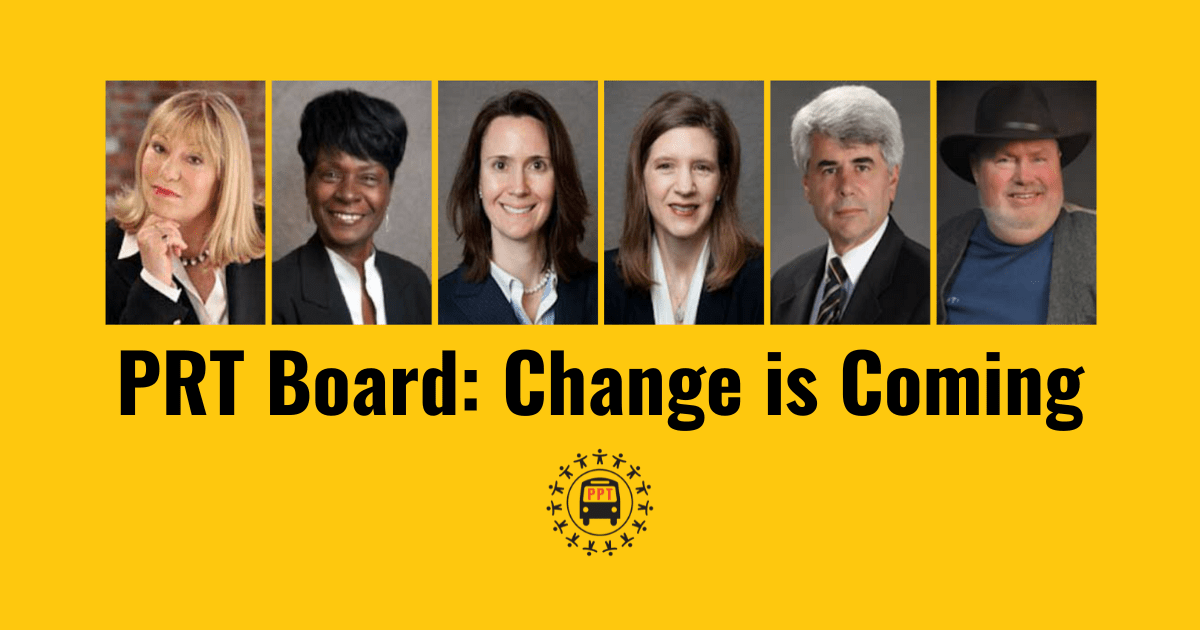 image description: yellow graphic has photos of 6 PRT Board Members who Sara Innamorato controls the appointments of, with text below that reads: “PRT Board: Change is Coming”. New County Executive Innamorato controls 6 appointees to the PRT Board of...
image description: yellow graphic has photos of 6 PRT Board Members who Sara Innamorato controls the appointments of, with text below that reads: “PRT Board: Change is Coming”. New County Executive Innamorato controls 6 appointees to the PRT Board of...
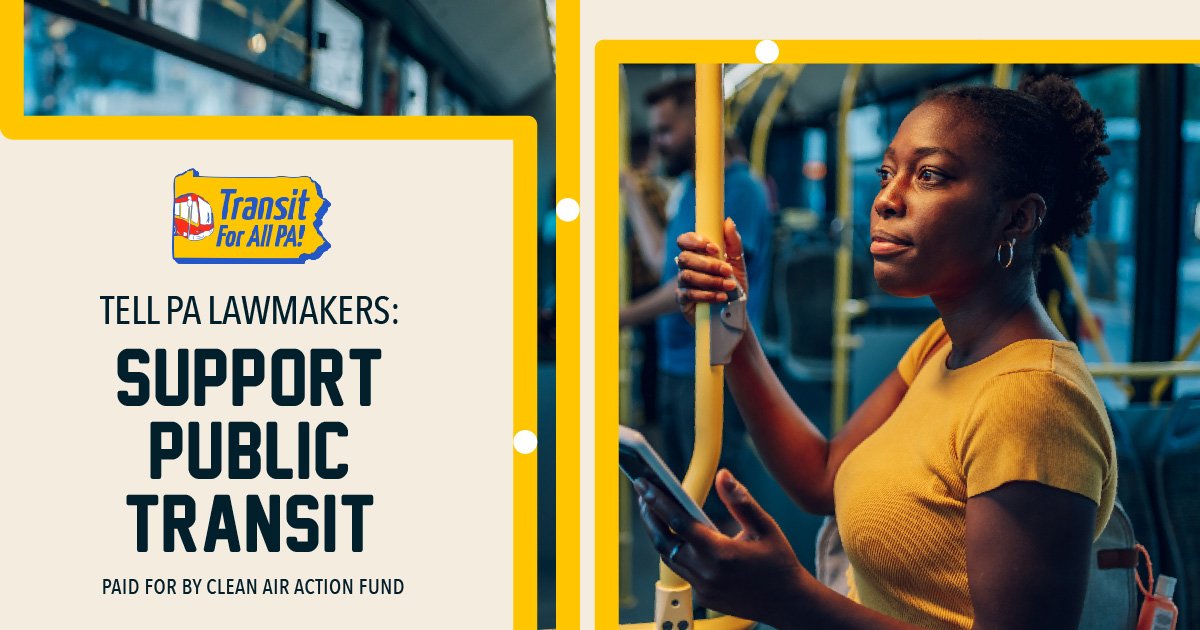 image description: photo of a person wearing a yellow shirt riding a bus, next to superimposed text that reads, “Tell PA Lawmakers: Support Public Transit. Paid for by Clean Air Action Fund. Take Action Now to Expand Access for All Pennsylvanians! Gov. Shapiro...
image description: photo of a person wearing a yellow shirt riding a bus, next to superimposed text that reads, “Tell PA Lawmakers: Support Public Transit. Paid for by Clean Air Action Fund. Take Action Now to Expand Access for All Pennsylvanians! Gov. Shapiro...
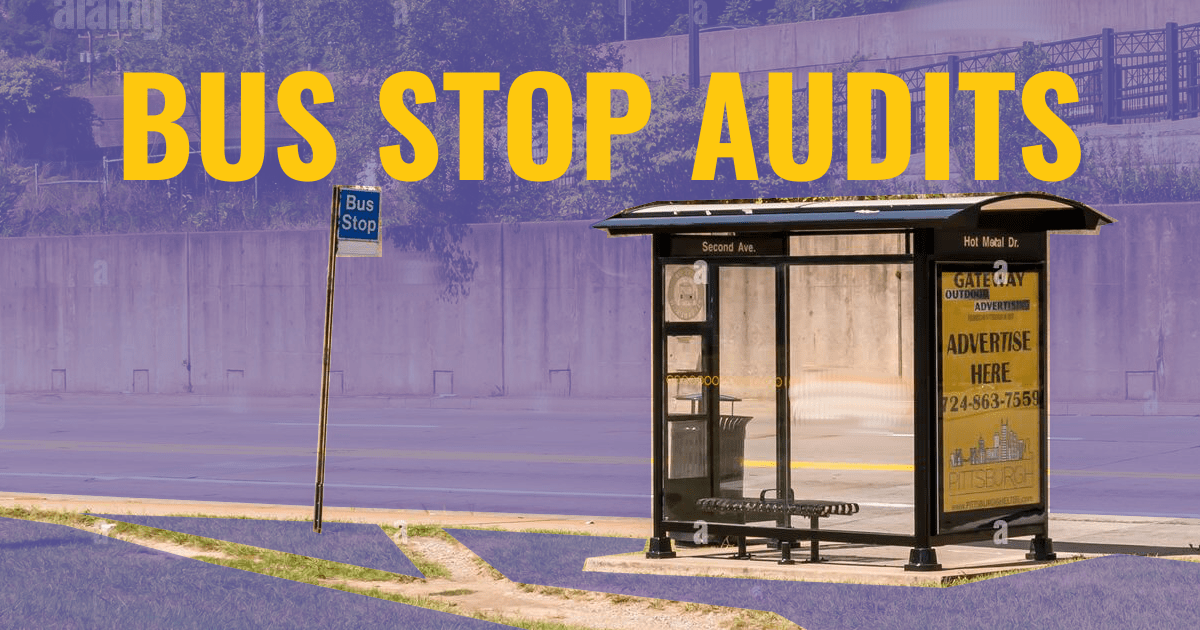 image description: Graphic shows a bus shelter in the City of Pittsburgh that lacks accessible connections. Text is overlaid on the image that reads “Bus Stop Audits”. It’s time to take a closer look at bus stops in Pittsburgh. Join us for a...
image description: Graphic shows a bus shelter in the City of Pittsburgh that lacks accessible connections. Text is overlaid on the image that reads “Bus Stop Audits”. It’s time to take a closer look at bus stops in Pittsburgh. Join us for a...
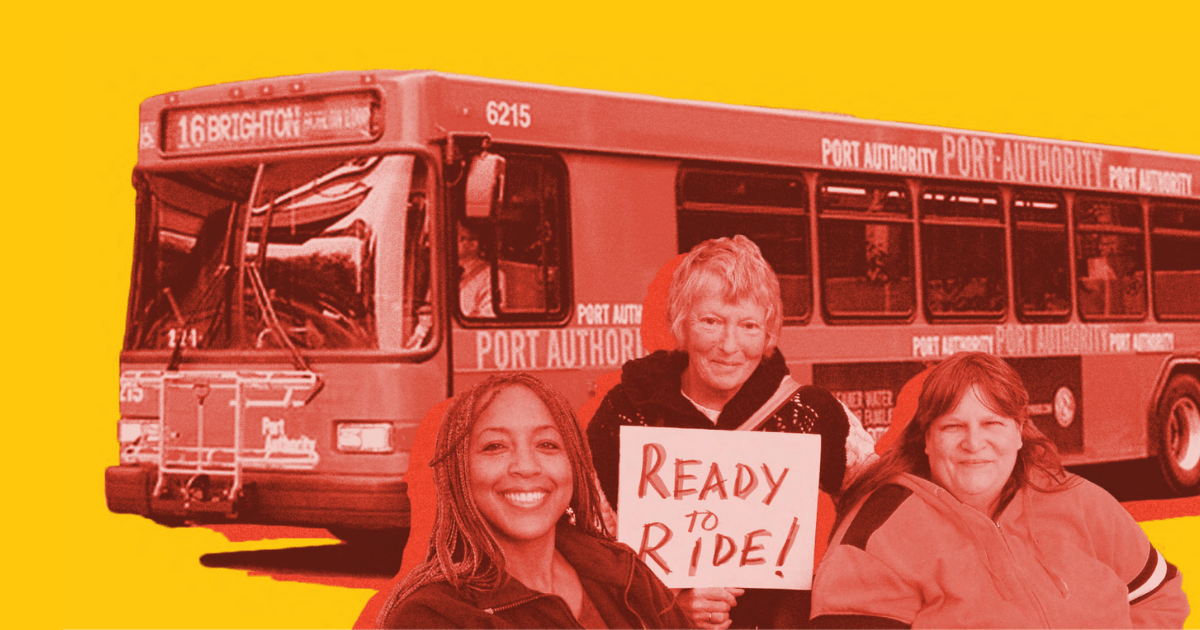 image description: three PPT Members it at a table. One holds a sign that reads “Ready to Ride!”. Behind them is a red PRT Bus. Sign up to join PPT and speak to your elected officials about how they can fight for better public transit service. From the...
image description: three PPT Members it at a table. One holds a sign that reads “Ready to Ride!”. Behind them is a red PRT Bus. Sign up to join PPT and speak to your elected officials about how they can fight for better public transit service. From the...





